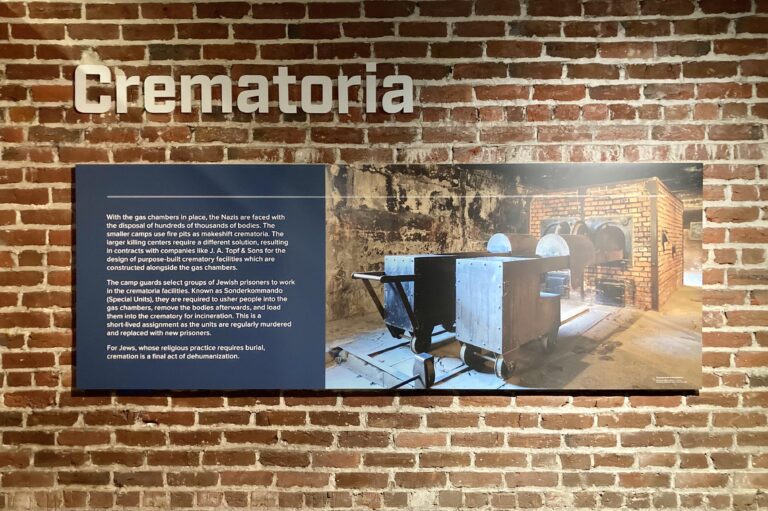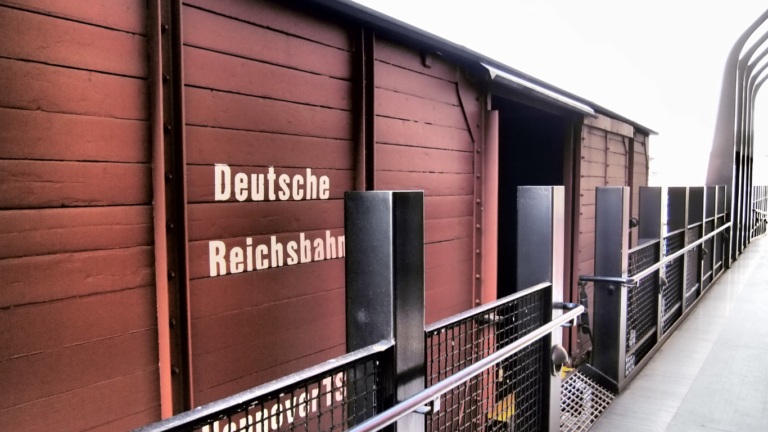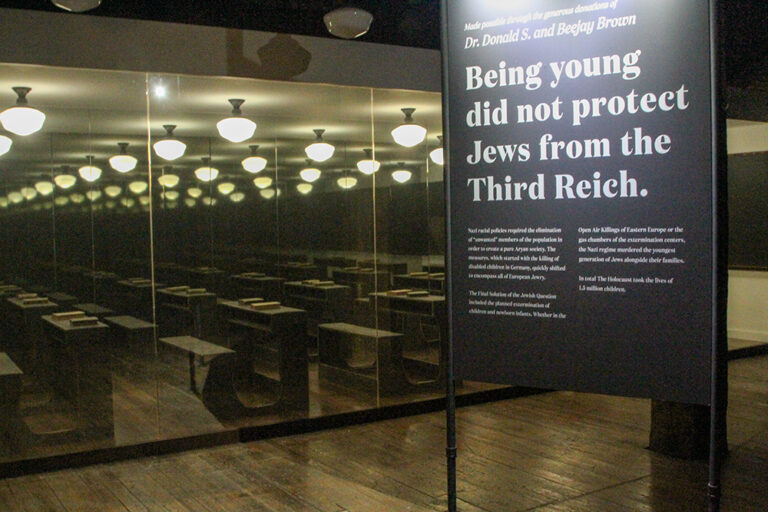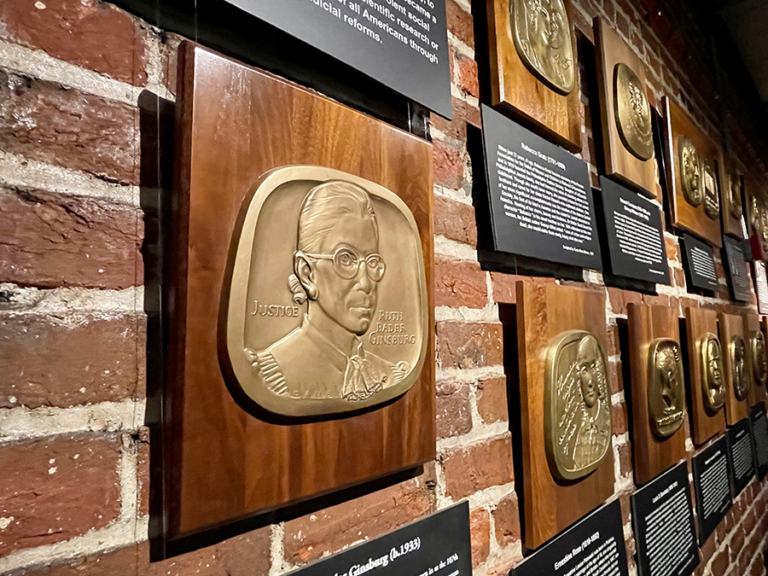Permanent Exhibits & Highlights
Our Permanent Exhibits
Our permanent exhibits narrate the complex and sobering history of the Holocaust.
As visitors progress through these exhibits—and chronologically through the events of the Holocaust—they are presented with a glimpse into the systematic destruction of European Jewry and the dangers of intolerance.
More than three hundred artifacts and the testimonies of local Holocaust survivors expand upon this history, representing the tangible and personal realities of this tragic event.
You will learn about The Rise of the Nazi Party, Dachau, Hyde Farmlands, Kristallnacht, the St. Louis, Kovno Ghetto and much, much more.

Highlights of the Permanent Exhibits Include...
Box Car
An authentic box car is located right outside of our front doors. In 2003, with the assistance of local Holocaust survivor Alex Lebenstein, the Museum acquired this authentic, early- twentieth century Deutsche Reichsbahn cattle car from a railway yard in Haltern-am-See, Germany.

Children's Memorial
The unique Children’s Memorial, an exhibit honoring the memory of the 1.5 million Jewish children who perished in the Holocaust, opened in 2022. It is a significant addition to the Virginia Holocaust Museum’s permanent collection.
Using mirrors and somber lighting for dramatic effect, the Children’s Memorial creates a stunning visual of an infinite panorama of empty classroom desks representing the unfathomable number of children and their unborn descendants who were victims of the Nazi’s Final Solution to exterminate Jews from Europe.

Jewish-American Hall of Fame
The Virginia Holocaust Museum is proud to be the permanent home of the Jewish-American Hall of Fame exhibit. Over 50 Jewish American men and women ― who have made important contributions in all fields of endeavor ― have been inducted since 1969.
As people gaze on the portraits of Albert Einstein, George Gershwin, Ruth Bader Ginsburg, Joseph Pulitzer, Dr. Jonas Salk, et al, it is hoped that visitors will reflect on what contributions to humanity might have been made by the six million Jews (and their descendants) whose lives were viciously taken in the Holocaust.

